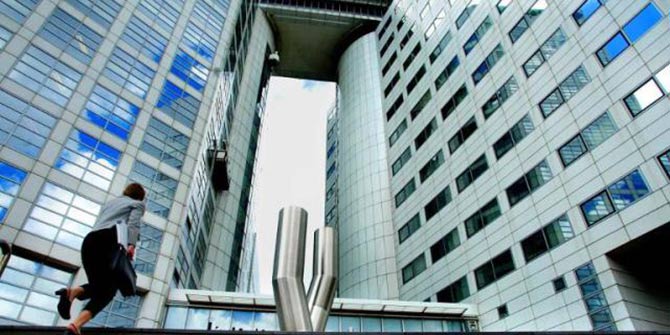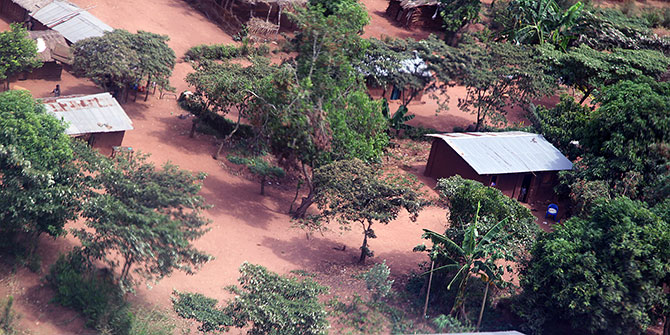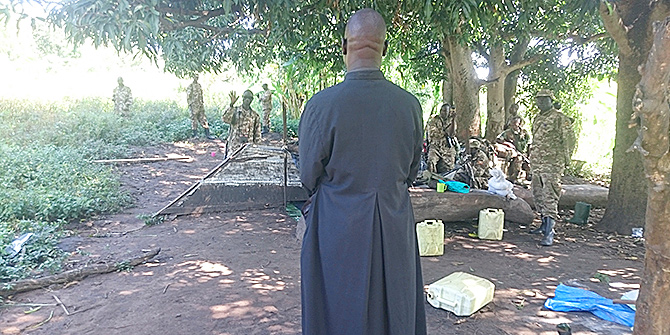In the second article of this two-part blog series, Tessa Laing and Sara Weschler analyse the outcome of the peaceful occupation of the UN Human Rights office in Gulu, northern Uganda by Acholi farmers in July this year and what it tells us about how the UN tackles human rights abuses by governments.
Read part one of this article for a comprehensive background of the land conflict that preciptated this protest and the early stages of the occupation.
“Apaa” is the name given to an area in the southern section of the East Madi Wildlife Reserve within the Adjumani District of Uganda’s Madi ethnic region. It is a stretch of land designated not for human settlement, but for the protection of Adjumani’s fauna and flora. Such, at any rate, is the claim of numerous Adjumani political elites, the Uganda Wildlife Authority, and even Uganda’s president, Yoweri Museveni.
The many thousands of people who live in Apaa, however, tell a different story.
According to this population, Apaa falls within Acholi ethnic territory in Amuru District, and is the ancestral home of several Acholi clans. While acknowledging that Acholi communities have been repeatedly displaced from the area during the colonial and post-colonial eras, the Apaa community remain deeply connected to the land. Moreover, they insist that since independence Apaa has been administered by Acholi district governments. It was only in 2007, after they returned from a decade of forced confinement in Internally Displaced Persons (IDP) camps during the Lord’s Resistance Army War, that locals began to hear that the land on which they lived fell under Adjumani jurisdiction and — more distressingly — that it might not be theirs to live on, anymore. Over the next decade, the people of Apaa would face repeated violent evictions at the hands of the Uganda Wildlife Authority and other state security agents.
By mid-2018, these operations had left fourteen people dead and thousands homeless. The 12-month period leading to October 2018 alonehas seen fresh waves of attacks that resulted in the destruction of more than 844 homes, three deaths and the displacement of over 2,000 people. Community leaders in Apaa engaged the assistance of a range of external allies. Yet media attention, traditional advocacy methods, debates in Parliament, and documentation of human rights abuses all failed to stem the attacks. Moreover, since the state itself was the perpetrator of this violence, the community began to feel that they might have to look outside their own country’s framework of public authority to find the solution to their plight.

Therefore, in July 2018, in a move that shocked everyone from local media, to the Ugandan Government, to representatives of the international community, 234 rural farmers from Apaa travelled nearly 100km to set up camp within the walled compound of the Office of the United Nations High Commissioner for Human Rights in Gulu Town — refusing to leave until the agency agreed to intervene on their behalf. Tired of eviction and forced relocation, the Apaa community turned their own displacement into a form of protest. As explored in our first article in this series [link], the UN’s response to the protesters was at times contradictory, and at times, downright hostile. Overwhelmingly, OHCHR staff showed that their primary concern was not the resolution of the human rights crisis at hand, but the preservation of their organisation’s standing in Uganda.
People Power: What Did the Occupation Achieve?
Against this backdrop, it is perhaps unsurprising that some of the occupiers’ greatest achievements came about not through the support of the UN OHCHR, but rather in spite of its reticence to respond. Apaa community leaders leveraged the attention and new contacts created by the occupation for direct engagement. Four representatives from the occupying group travelled to Kampala to personally meet with foreign embassies, Uganda’s Land Commission of Inquiry, and the Speaker of the Parliament of Uganda. The Commission opened a case to investigate the abuses in Apaa and ambassadors of both the European Union and the United States committed to addressing the issue in person with President Museveni.

That being said, the pressure exerted upon the OHCHR by the Apaa protest did drive the organisation into a degree of active engagement with the Government — albeit behind closed doors. Four weeks into the occupation, for example, when the acting country director Nicole Bjerler invited four Apaa community representatives to a meeting at the OHCHR offices in Kampala, she assured them that the army had issued a directive against further eviction operations in Apaa. The development marked major progress for the community. Nevertheless, no assurances were put down in writing. And the community’s request that the OHCHR make a tangible commitment to a rapid response in the event of renewed attacks went unanswered.
The UN’s Relevance Thrown into Question
The UN OHCHR highlights its focus on “assistance to governments,” noting that governments themselves “have the primary responsibility to protect human rights.” Yet the dark reality remains that in much of the world, governments are the primary purveyors of human rights abuse. The people of Apaa turned to the UN because the public authorities tasked with protecting them in their own country had not only failed them, but even actively victimised them.
If in order to remain in Uganda, the primary human rights organ of the United Nations must relinquish its power to speak out against undeniable human rights abuses, the question must be raised: is such a trade-off worth the access? Should the OHCHR stay, albeit impotent, forced to pander to government interests to the extent that they themselves begin to encroach on citizens’ rights?
The UN OHCHR cannot possibly live up to its mission or values if it allows itself to be held hostage by host governments wielding the threat of expulsion. When compromises for access begin to preclude the United Nations’ primary human rights organ from actually defending human rights, the organisation becomes complicit in the abuses that host governments commit.
Such a situation is untenable and should give funders serious pause. If donors want the struggle for human rights to be advanced through the UN system, they need to pressure the OHCHR to fundamentally rethink how it navigates the trade-offs between access and effectiveness. In some cases, this may be as simple as pressuring the organisation to grow a proverbial spine. Many host governments that threaten to terminate the OHCHR’s country mandate may in fact be bluffing. After all, expelling a UN agency comes with repercussions on the global stage. The OHCHR should therefore be called upon to push the limits of the sorts of advocacy its hosts will “allow.” At the same time, in situations where the OHCHR is truly unable to confront host governments on their human rights violations, funders should demand that that the organisation develop new — and genuinely effective — ways of empowering local human rights groups, or citizen-driven social movements that are willing hold to public authorities to account. Finally, in circumstances in which the price for access proves too high, the OHCHR should withdraw and instead foster relationships with human rights defenders on the ground that would in turn allow it to advocate for human rights more openly and objectively from afar.
Some of these reforms may prove difficult to implement. Nevertheless, the OHCHR must not be permitted to shy away from them. If the Office of the High Commissioner for Human Rights continues to subordinate the defense of human rights in countries such as Uganda to its need for access, it risks reducing itself to a weak reflection of the already fractured dream of international governance.
The Struggle Continues
On August 13, the leaders of the 234 Apaa community members occupying the OHCHR held a press conference to publicise the progress they had made over the preceding weeks, and to announce the group’s intention to decamp in three days’ time. When asked by a reporter what the community would do if attacks resumed after they returned to Apaa, the representatives smiled at one another knowingly before to turning back to journalists. “Something else,” one of them said at last, “that no one can expect.”
The departure preparations coincided with the first (and to date only) on-the-record statement by any UN official regarding the occupation. In an email exchange with the New York-based Black Star News, Bjerler asserted that the Office would “continue to follow the issue, including by calling for a Government-led dialogue to identify long-term solutions which will allow the Apaa people to live in peace and security, in a situation in which they can rebuild their lives and livelihoods.” To the occupiers, the statement implicitly acknowledged the community’s right to live undisturbed in Apaa. Whether and how the UN intends to make good on this promise remains to be seen.
In the two months since the occupation concluded, the community has experienced renewed attacks, even as President Museveni traveled to Apaa in late August to announce the formation of a committee to resolve the situation. The President asserted that the committee would assess whether the Apaa area was to be officially degazetted from the neighbouring wildlife reserve (which would allow Apaa residents to stay), or whether the population would be resettled elsewhere. While state media coverage of the event proclaimed an imminent “solution” to the land crisis, Apaa residents who gathered to hear Museveni came away with grave concerns.
During his speech, the President invited almost exclusively Adjumani District leaders to address crowds alongside him. Only one Acholi representative trusted by the Apaa community was allowed to speak. Understandably, the community read this imbalance as an implicit endorsement of Adjumani District’s claim to their land. There was no dialogue, and no opportunity for the Apaa community to express their views or concerns. In an alarming turn, the one direct exchange with the inhabitants of Apaa came when government representatives called for the identification of all those who had occupied the OHCHR, and demanded that the group stand separately from the rest of their community. Fearing that this request was intended to facilitate government retaliation against the protesters, the community refused to comply. The incident contributed to the already hostile tone and structure of the overall meeting and further undermined what otherwise might have seemed like a reasonable proposal.
Heightening Apaa residents’ fears that the President’s visit did not signify a moment of change, just a week later, armed men in uniform once again returned to Apaa, this time brutally attacking two women and looting produce from Gaji Market. According to one of the women who was beaten, the assailants yelled that the community must leave Apaa “before things turn violent.”
Exceptionally disconcerting in all this is the fact that because of their unwillingness to engage directly with the situation on the ground, UN staff may be genuinely unaware of the disadvantage at which the community has once again been placed. Looking on from afar, the OHCHR team may truly believe that a viable “government-led dialogue” is underway. At any rate, although UN officials have repeatedly been made aware of the renewed violence in Apaa, no visible gesture of protection or support has been forthcoming. Once again, despite the assurances they received, the community is left feeling abandoned.
The people of Apaa, however, are not new to this struggle. They have been defending their land for years. Back on August 16, as they packed up their camp and loaded themselves and their belongings into four massive lorries, the occupiers of the OHCHR compound in Gulu knew that their fight was far from over. They concluded their protest with equal parts hope and determination.

In East Africa buses and lorries often have names – words or phrases that drivers stencil onto the fronts of their vehicles. And on that morning, as the final lorry of occupiers pulled out through the OHCHR gates, swaying ponderously under the weight of several dozen cheering passengers, sunlight glinted momentarily off three words plastered across the top of its windshield. “NEVER GIVE UP,” they read. …A coincidence, no doubt. And yet, amid the songs and ululation, as the protesters settled in for the long road ahead – buoyed by the knowledge of what they had accomplished over the past 36 days, but acutely aware of the challenges and uncertainties that still lay before them – it seemed perhaps the ideal banner under which to begin the journey home.
Find out more about the Politics of Return and Trajectories of Displacement research projects, which are based at the Firoz Lalji Centre for Africa and funded by ESRC/AHRC.
Tessa Laing is is a doctoral researcher in Development Studies at the University of Cambridge and worked for five years in northern Uganda working with community groups and advising the local government. She holds a Master’s degree in Anthropology from the University of Canterbury.
Sara Weschler has been involved in a range of post-conflict recovery projects in northern Uganda since 2007. From 2011-2012, while working for the Gulu-based Information for Youth Empowerment Programme, she served as designer and coordinator for an OSIEA-funded project entitled “Capacity Building for Women and Youth Land Rights in Gulu and Nwoya District.” She holds a Master’s degree in African Studies from Columbia University, where her thesis focused on the colonial-era history of forced displacement in Acholiland.
The views expressed in this post are those of the author and in no way reflect those of the Africa at LSE blog, the Firoz Lalji Centre for Africa or the London School of Economics and Political Science.





1 Comments